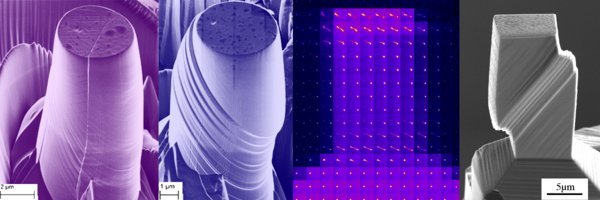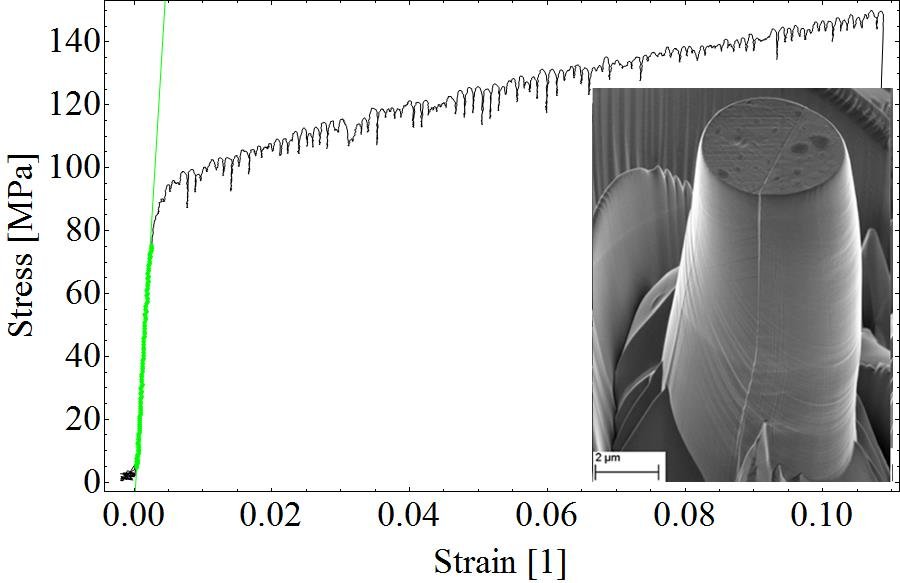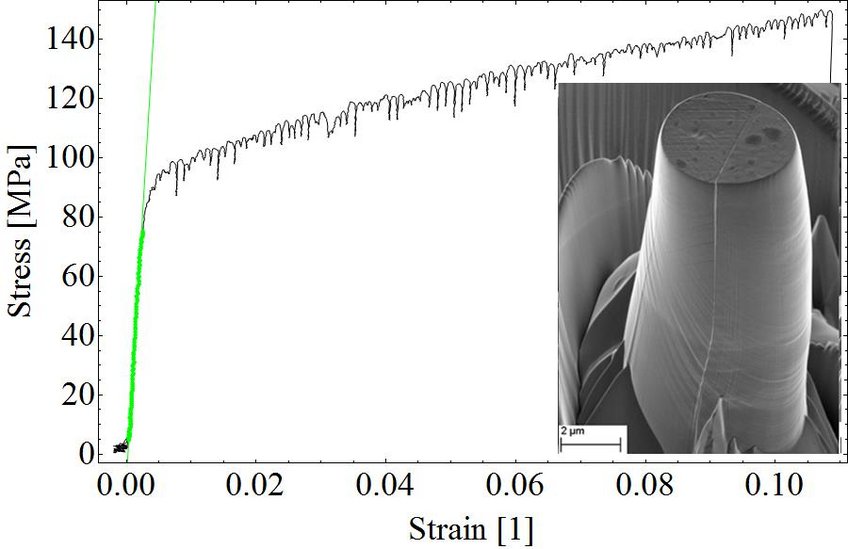
Dislocation slip transfer in micron sized bi-crystals analyzed by advanced in situ methods
Even though most structural materials are polycrystalline, the dislocation grain boundary interaction is not thoroughly understood.
This is partly due to the fact that the individual behavior of one dislocation is blurred by (i) the unknown surrounding material and (ii) the collective behavior of all dislocations. Advances in micro pillar compression and micro beam Laue diffraction (µLaue) nowadays enable to study the mechanical response of single dislocations with one distinctive grain boundary.

This study is dedicated to the dislocation slip transfer through different grain boundary types. In situ electron microscopy and µLaue pillar compression tests of micron sized bi-crystalline samples are conducted on different grain boundary types. The mechanical response of the pillar and the underlying, local dislocation structure can be interlinked with sub-second time resolution.
This approach sheds new light onto the role of grain boundary type, stacking fault energy, dislocation density and dislocation source size distribution which remains unknown in macroscopic experiments.
